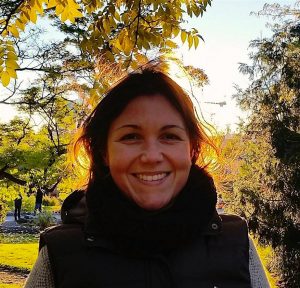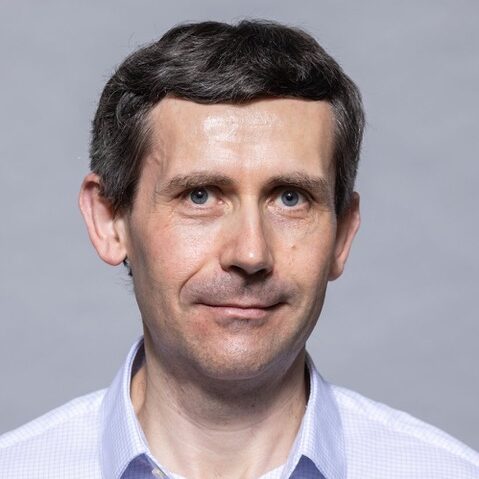
Red Hat Research Quarterly
A marriage of true minds: Making university-industry collaborations succeed
Tomáš Vojnar has been a researcher, professor, vice-dean, and department chair—what about a marriage counselor? In conversation with Red Hat Research engineer Martin Ukrop, Tomáš —now head of the Department of Computer Systems and Communications in the Faculty of Informatics at Masaryk University—joked that a good relationship between academic and industrial partners can be like a marriage: to be successful, you need to focus on the long-term, communicate well, and accept each other’s quirks. (Then again, marriage counselors don’t have to deal with the rise of AI.) Red Hat’s eight-year partnership with Masaryk University has definitely stood the test of time—in December 2024, Red Hat committed to another five years of supporting research collaborations in cybersecurity, AI, and other strategic research areas with Masaryk. In this interview, Martin and Tomáš discuss the benefits and challenges of university-industry collaborations, how AI could influence the dynamics, and why open source is a key ingredient for success.
—Shaun Strohmer, Ed.
Martin Ukrop: Let’s begin with a big question. How does cooperation between industry and academia work? While industry does its own research for its own applied use, and some people in academia are interested in applied research, research generally has different incentives and works at a different speed. Where do you see the benefits of the two sides cooperating?

Tomáš Vojnar: It is different. In academia, you have more freedom. You can spend years trying to solve some hard problem, so long as you can publish. In industry, it’s much more goal oriented. There are exceptions in some research centers of the biggest companies, but they still communicate with the production groups. But I think that these two approaches can naturally benefit from each other.
Martin Ukrop: Wouldn’t they clash into each other? From my experience on the industry side, although academia is where new ideas arise, it seems to move more slowly compared to industry. And from the academic view, industry seems to be interested in just the first step and not necessarily in the depth underneath it and the principles. So how do they complement each other?
Tomáš Vojnar: Because of the freedom in academia, there is a challenge to come up with something new. And then to make it applicable, that’s the task of industry. I’m not saying anything new here, but industry can give academia interesting problems to solve.
If the situation goes in the best possible direction, there may be some researchers that say, “Yes, this is something where my methods apply,” or if it’s not directly applicable, it’s close enough. Part of the problem in collaboration between industry and academia is that industry sometimes identifies a problem and they expect people from academia to immediately start working on it. But that’s seldom the case. And sometimes new ideas in academia arise independent of what industry asks for, but if the connection is there, companies can realize those ideas are good and can be exploited in some way.
The impact of AI
Martin Ukrop: With the focus on AI, it seems to me that industry-academia cooperation is a bit different. While academia is often at the forefront of new ideas, in AI, industry—at least publicly —seems to be ahead. Do you see it that way?
Tomáš Vojnar: I’m not an expert in AI, but of course I see changes. I see that in many areas, including mine, people are trying to come up with combinations of what they were doing plus AI. This makes perfect sense, because machine learning and AI alone will not solve everything. I recently attended a premier conference on logic programming, and many of the talks were about combinations with machine learning and machine reasoning—for example using ChatGPT or similar systems to help translate natural language to more formalized, structured notation that is amenable to precise, reliable machine reasoning. But a human expert evaluates that the translation is correct—that it was not shifted completely.
Academia doesn’t have the resources that some of the richest companies have.
As for the speed and depth of AI research in industry and academia, academia mostly doesn’t have the resources that some of the richest companies have. It’s almost impossible for people from academia to do training of large neural nets. Here, naturally, academia is behind industry. That said, I think it pays to be skeptical of some industry AI claims. Some of them are more marketing oriented, because companies need to say their products are AI-powered or AI-enabled, even if it is of no real benefit to customers. So while it’s true that there are strong companies leading the crowd in AI, some of what we hear may be driven by a marketing bubble.
At the same time, there may be researchers at universities working on the deep theoretical background of AI, which will be needed. We need to have some understanding of what’s happening in the neural networks in order to have some guarantees that the reasoning is meaningful. Or we should have combinations of machine reasoning and neural networks, so we can have more trust in the results.
Martin Ukrop: You have to admit that the AI boom shows the immense capability of industry to pivot on what we might call “The next big thing.” A lot of companies started implementing true AI and AI enhancements into their production research pretty quickly, while implementing AI in university research is slower. I haven’t decided whether that’s an advantage or a disadvantage, however.
Are you seeing any direct impact or improvements from AI in your own research?
Tomáš Vojnar: In one branch, yes, directly. With one student, we are combining static program analysis with machine learning. The aim is to use graph neural networks to prioritize warnings produced by static analysis for the developers so they can concentrate on those errors that are more likely real errors. Such approaches do already exist; they are, however, often closed source. We are aiming at an open source solution.
In other areas, we have plans to apply AI in the combination of machine learning and machine reasoning, translating from natural language to more structured language, as I mentioned earlier. We have a collaboration with Honeywell and some other partners working on this subject in the area of critical systems. Using an approach of the kind I mentioned, we could, for example, translate aircraft systems specifications in a natural language to some more formalized notation on which some formal reasoning can be done, then translate the results back. So these are two concrete examples.
Cooperation benefits
Martin Ukrop: Speaking of your own research, what benefits do you get from collaborations with industry?
I want to work on problems that are real.
Tomáš Vojnar: For me, inspiration is probably the most important factor. I want to work on problems that are real—real in the sense that somebody in industry is interested in solving them and trying to apply the tools or theories I’m working on. If it gets applied, that’s extra rewarding, though of course you don’t always get those results. But when you have a result that is nice theoretically and it’s applied, that’s an excellent feeling.
Martin Ukrop: So it’s not only about the inspiration at the beginning but also the applicability at the end?
Tomáš Vojnar: Yes, though I’m still primarily a researcher. I do not insist on having everything applied. It’s enough for me to see that it has real potential for being applicable, because getting it to real applications is a long, long journey. We see it now, with Perun and other things we’re working on. (Perun is a system for software performance analysis and testing support plus storage of performance data across multiple software versions for comparisons and visualizations. See the article “Meet Perun: a performance analysis tool suite” in this issue of RHRQ.)
Martin Ukrop: If you get a research result applied upstream and used by literally millions of users, is that valued in academia?
Tomáš Vojnar: Scientific publications are still the most highly valued, which is natural. I can’t imagine a researcher without a publication, but I can imagine research without applied results. However, I would say that, at sensible universities, applied results are taken into account seriously. One problem is that they are even more difficult to evaluate than papers.
Martin Ukrop: With papers, there are metrics and quartiles of publishers and conferences, but with applied results, how do you determine what is important, interesting, or impactful?

Tomáš Vojnar: In my view, there’s no other option than peer review. One has to describe the result, and several evaluators have to go through it and evaluate it. And, according to me, one should base the result on research. If there are publications related to the work, you can say, “I started with this idea, and it was published at a great conference or in a reputable journal, and it attracted some citations. Then we turned it into a tool, and the tool is used in a company or public body.”
You should try to estimate how many users one has; however, if a tool is specialized for a few people, say for police, you cannot expect the same number of users as something like ChatGPT. So this must be evaluated by people. You can also consider whether it’s used in one country or globally, whether it generated some economic impact, if it is expected to be monetized, and so on.
Martin Ukrop: During your research you have cooperated with multiple companies and seen the industrial influence on academic research. Where did that come into your career path?
Tomáš Vojnar: I started studying at Brno University of Technology (BUT), Faculty of Electrical Engineering and Computer Science. I graduated from Master’s studies in 1996, then continued at the same faculty as a PhD student. I finished my PhD studies in 2001, then went to Paris as a postdoc. I spent two years in a laboratory called LIAFA (Laboratoire d’Informatique Algorithmique: Fondements et Applications), then returned to Brno and joined the new Faculty of Information Technology (FIT) as an assistant professor, gradually proceeded to full professor, and for some time I was the FIT Vice Dean for science and research. Most recently, I moved to the Faculty of Informatics of Masaryk University (FI MUNI), though I still have an appointment with BUT to finish working with my PhD students there.
My experience with cooperative research started when I was employed in a European project and we had cooperation with Ericsson. But I have never been a pure theoretician, working with pen and paper and being happy just proving something. I’ve always wanted to have prototypes and play with them in some real-as-possible case studies, and I began to recognize that it’s not so easy to get those opportunities without cooperation with industry.
That’s when I started cooperating with Red Hat, with the motivation that I needed some links to industry to have some real stuff to work on. At the same time, there was interest from FIT to have somebody working with Red Hat. So with a push from both sides, I went for it.
Martin Ukrop: Which fields of research did you start with?
Tomáš Vojnar: At the very beginning, I worked on Petri nets (a modeling language for the description of concurrent systems) and their use for analysis and verification. I was really focused on this one modeling language, but I started to realize that it’s not the language but the utility of the language, and that there are other languages and other means that seemed better. So I started work on analysis and verification methods in general, trying to select those that seemed suitable for those analysis and verification tasks that I was interested in.
Since then, I have always worked on formal methods as well as testing approaches applied mainly for analysis and verification but also in other areas such as optimizing compilers, regex pattern matching, or network traffic analysis. In addition, I have also been interested in the background theories of automata and logics.
Optimizing collaborations
Martin Ukrop: So far you’ve described two patterns of cooperation: when industry comes to academia with a commission, a problem they want solved, and when an academic researcher has an idea and industry notices it. And academics can reach out to industry. Do you see that some of these patterns function better than the others?
Tomáš Vojnar: I think the best situation is when you have long-term collaborations between industry and academia in which both sides slowly get acquainted with each other and they start understanding how the other side works. You are right that, in academia, the process is slower. People study a long time to get deeper results, and they are not willing to change their direction so quickly and so easily. In industry, you need results faster, concerning concrete problems.
But if the two sides are trying to communicate, there will be successes. It’s like a marriage.
Each side needs to understand these two things and tolerate the fact that some effort will go in vain. There will be suggestions coming from industry that nobody in academia will take. There will be ideas coming from academia that nobody in industry will be interested in. But if the two sides are trying to communicate, there will be successes. It’s like a marriage.
Martin Ukrop: Would you say that research cooperation is different when you have an enterprise Red Hat’s size compared to a middle-size company or a small regional startup—or even a university spinoff doing research?
Tomáš Vojnar: If it’s a huge company, you usually already have some employees who are more research oriented, so it’s easier for them to find some common subjects with academia. If it’s a spinoff, which really must concentrate on one concrete product, it’s difficult. Either there is a perfect match from the very beginning, or there will be no cooperation.
Martin Ukrop: So it seems that the smaller the industrial partner is, the more fragile the cooperation would be. Larger companies have the flexibility of going into research that may not be useful and directly applicable to them today, but maybe tomorrow or the day after tomorrow—figuratively speaking.
You mentioned earlier that industry-academia cooperation works best when there is a long and slow period of getting to know each other. How does that apply to the story of growing the cooperation between your research group and Red Hat?
Tomáš Vojnar: It’s been a long time. At the beginning, I was supervising some students working in Red Hat and overseeing administrative relations. But then I started really trying to find applications for what I was working on—program analysis—in Red Hat.
Martin Ukrop: This was more in the direction of you seeking applications in industry rather than industry coming with a commission?
Tomáš Vojnar: Yes, and some of the directions were not that successful—rather, they were successful in academia but they didn’t find real applications in Red Hat. Still, one of those, the collaboration with Kamil Dudka about verification of memory safety (AUFOVER), resulted in a tool called Predator, which is still winning in some international competitions. And some of the ideas were implemented in other tools, especially CPAchecker for Linux drivers.
Perun also traveled academia to industry. The Red Hat Kernel Performance team works with it on a regular basis, so it’s been successfully applied. As of now, Perun is deployed in the day-to-day CI pipeline of kernel performance testing, and the detailed analytical results are then used for deeper investigation of individual performance degradation cases.
There’s also hope for further collaboration, which I’m really excited about. I was showing some visualizations of performance data from Perun at the Lab Day here at Masaryk University. My colleague Barbora Kozlíková, who works on visualization, saw it, and now there is a chance we will start collaboration and spark something new. Such possible collaborations do not appear all the time, however. One needs to work a long time in the area to encounter them.
Martin Ukrop: As a person responsible for overseeing research cooperation with universities, I can confirm the truth of the graduality of it all. You described an advanced point of implementing deep research within the pipeline, but there’s been a years-long working cooperation to get to that moment. And even before your research cooperation, there were smaller things, like supporting smaller research engagements with bachelor’s and master’s students and presentations on university events, that were nudging the relationship from both sides until we arrived at the point of supporting PhD research that will get applied. So this is years in the making, and hopefully we’ll continue for many more years.
Tomáš Vojnar: I very much hope so.
Martin Ukrop: Given your experience cooperating with industry, are there any dos and don’ts that you would suggest if a company wants to cooperate with academia, or vice versa?
Tomáš Vojnar: As I said earlier, you have to accept that it will take a long time, that the cooperation must develop gradually. If someone says, “Here are the subjects, take it or leave it,” things will usually stay on the “ leave it” side.
Another thing that’s really crucial is open source. If the research is about technology that academia cannot publish and cannot speak about, this is very sad. Fortunately, Red Hat has always been a leader in that.
Martin Ukrop: Some companies are doing interesting research but keeping it proprietary and unpublishable.
Tomáš Vojnar: Yes, which is really bad. Even for students, at least in Czechia, the results must be made public. There may be some delay, but not too long. You can hardly have students working on something that must stay secret.
Another thing that’s really crucial is open source.
Martin Ukrop: Another learning that I would emphasize is having the right scope. In almost all the projects you mentioned in cooperation with Red Hat, first successes came via reducing the scope—by doing the verification just on some of the drivers and not the whole Linux kernel, or doing the performance analysis of just a piece, rather than the whole.
Tomáš Vojnar: Or if there is already some technology, then really try to find where it could be applied. And eventually, with luck, there will be an application for it.
Martin Ukrop: A final question: you mentioned that there is interesting research outside academia, be it large corporate research centers or dedicated research teams in small companies. Have you ever been tempted to transition to this type of research, potentially cooperating with academia still, but from the other side?
Tomáš Vojnar: I value the freedom I have at the university. If I decided to move to industry, I would go to a large, strong company to be close to how universities work and have more freedom. But that’s a question of personality. I would never go to a spinoff or startup either—that’s too fragile for me. That said, I would love to support somebody starting a spinoff or startup in an area close to me.
Martin Ukrop: OK, so if there’s a startup reading this article, they can approach you! Thank you for the interview.
SHARE THIS ARTICLE
More like this
The name Luke Hinds is well known in the open source security community. During his time as Distinguished Engineer and Security Engineering Lead for the Office of the CTO Red Hat, he acted as a security advisor to multiple open source organizations, worked with MIT Lincoln Laboratory to build Keylime, and created Sigstore, a wildly […]
“How many lives am I impacting?” That’s the question that set Akash Srivastava, Founding Manager of the Red Hat AI Innovation Team, on a path to developing the end-to-end open source LLM customization project known as InstructLab. A principal investigator (PI) at the MIT-IBM Watson AI Lab since 2019, Akash has a long professional history […]
John Goodhue has perspective. He was there at the birth of the internet and the development of the BBN Butterfly supercomputer, and now he’s a leader in one of the toughest challenges of the current age of technology—sustainable computing. Comparisons abound: one report says carbon emissions from cloud computing equal or exceed emissions from all […]
What if there were an open source web-based computing platform that not only accelerates the time it takes to share and analyze life-saving radiological data, but also allows for collaborative and novel research on this data, all hosted on a public cloud to democratize access? In 2018, Red Hat and Boston Children’s Hospital announced a […]
Everyone has an opinion on misinformation and AI these days, but few are as qualified to share it as computer vision expert and technology ethicist Walter Scheirer. Scheirer is the Dennis O. Doughty Collegiate Associate Professor of Computer Science and Engineering at the University of Notre Dame and a faculty affiliate of Notre Dame’s Technology […]
What is the role of the technologist when building the future? According to Boston University professor Jonathan Appavoo, “We must enable flight, not create bonds!” Professor Appavoo began his career as a Research Staff Member at IBM before returning to academia and winning the National Science Foundation’s CAREER award, the most prestigious NSF award for […]
Don’t tell engineering professor Miroslav Bureš that software testing can’t be exciting. As the System Testing IntelLigent Lab (STILL) lead at Czech Technical University in Prague (CTU), Bureš’s work bridges the gap between abstract mathematics and mission-critical healthcare and defense systems. His research focuses on system testing and test automation methods to give people new […]
In 2017, Red Hat Chairman Paul Cormier and Boston University (BU) professor Orran Krieger helped spearhead a collaborative partnership between the two institutions that would come to include expanding Red Hat’s participation in the MOC Alliance, the establishment of the Red Hat Collaboratory at BU for research incubation, and the creation of a Red Hat […]











